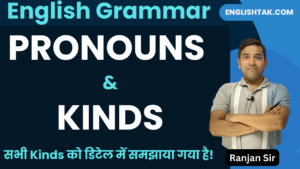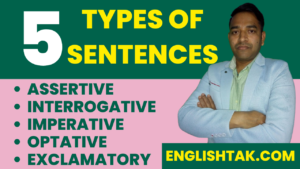![]()
Mood in English Grammar
Table of Contents
Mood in English Grammar:- In English grammar, mood refers to the form or manner in which a verb is used to express the speaker’s attitude, intention, or the certainty of an action. There are three main moods in English: indicative mood (निश्चयवाचक विभक्ति), imperative mood (आज्ञावाचक विभक्ति), and subjunctive mood (संभवना वाचक विभक्ति).
These different moods help convey the speaker’s intention, attitude, or the level of certainty associated with the action expressed by the verb. Understanding the mood of a verb is important for accurately expressing various shades of meaning and conveying the appropriate tone in English sentences.
Types of Mood in English Grammar
1. Indicative Mood (निश्चयवाचक विभक्ति):
The indicative mood is used to state facts, express certainty, describe real events, or ask questions seeking information.
It is the most commonly used mood in English and is often used in straightforward statements or questions.
Example:
I am going to the store. – मैं दुकान जा रहा हूँ।
She has learn spoken English. – उसने बोली जाने वाली अंग्रेजी सीख ली है।
2. Imperative Mood (आज्ञावाचक विभक्ति):
The imperative mood is used to give commands, make requests, or provide instructions.
The subject is usually implied (you) and the verb is in its base form.
Example:
Open the window. – खिड़की खोलो।
Don’t touch my phone. – मेरे फोन को मत छुओ।
3. Subjunctive Mood (संभवना वाचक विभक्ति):
The subjunctive mood is used to express hypothetical situations, wishes, suggestions, or conditions contrary to fact.
The form of the verb changes in certain cases, such as using “were” instead of “was” in unreal or hypothetical situations.
Example:
I wish she were here. – मैं चाहता हूँ कि वह यहाँ होती।
I suggest that he take the bus. – मैं सुझाव देता हूँ कि वह बस से जाए।
4. Conditional Mood (शर्त वाचक विभक्ति):
While not strictly considered a mood, the conditional mood is often grouped with moods as it expresses a condition and its consequence.
It is used to describe hypothetical or unreal situations and their likely outcomes.
Example:
If I had money, I would buy a car. – अगर मेरे पास पैसे होते, तो मैं एक कार ख़रीदता।
Understanding the different moods helps convey the speaker’s intention, assertiveness, level of certainty, and the hypothetical or real nature of the action being described.
Learn Grammar in Hindi
Transitive Intransitive Mono-transitive & Ditransitive Verb
45 Most Important Collective Nouns In English
Prepositional Phrases in English
List of Stative Verbs with Hindi Meaning
Use of LET in English with Hindi





